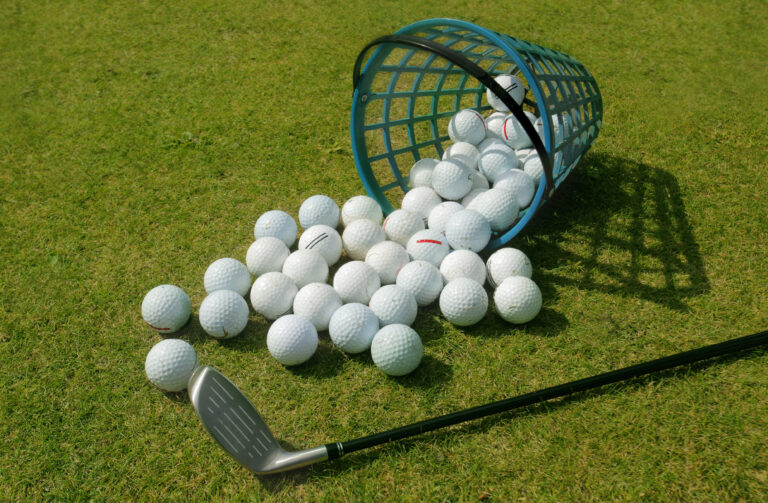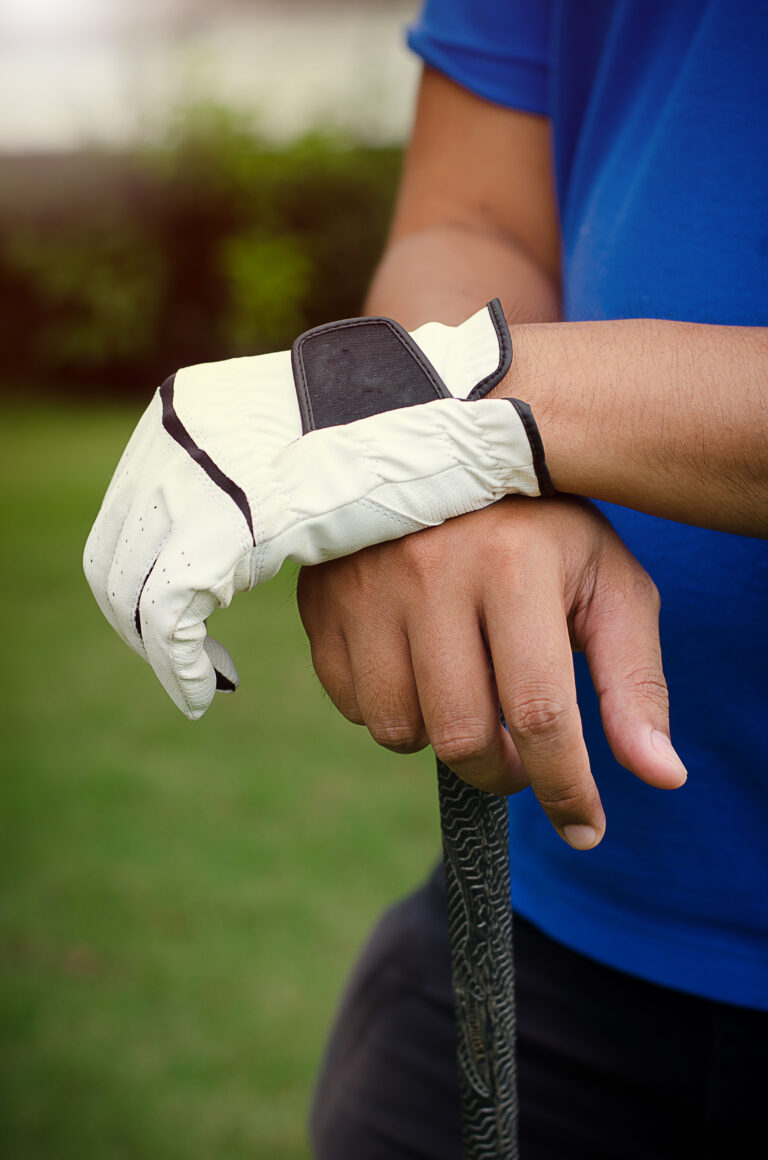What Is a Good Golf Score for Beginners? (Stop Wasting Your Time and Determine Where You Stand in the Game)
So, you or someone you know just started playing golf, and you might ask yourself, “what is a good golf score for beginners?” The answer may not be as straightforward as you would like because it depends if you are a beginner who falls into a particular category of golfer or if you’re an outlier. If you or a golfer you know falls into the latter category, then you or they should have realistic expectations for average golf scores, especially in the beginning.
A Good Golf Score
It is essential to consider the player’s age, golf course difficulty, circumstances, and equipment. These are all important factors; however, it is possible to determine a general “good score” when all elements are considered.
A good golf score is relative to you, the player, and where you are in your golf journey. What may be a good golf score for you may not be a good score for another golfer, and vice versa. Keeping in mind golf is a lifelong game meant to be played for enjoyment while striving to improve is essential.
Beginner Golfer Defined
First, we must define what it means to be a beginner golfer. I think anyone who has been playing golf for less than a year should be considered a beginner. Although some may argue otherwise, I believe this is a pivotal point where if you have played at least a couple of rounds a month, you should have enough rounds under your belt to become somewhat familiar with playing on a golf course and maneuvering the golf ball.
Once a golfer reaches the one-year mark, I would deem the average player to have reached the intermediate level; this has nothing to do with ability, score, or specifics such as whether your golf swing is good. To be intermediate at this point in your golf career means playing golf long enough to surpass the beginner status.
Golf Course Difficulty
Course difficulty is one of the most important factors to consider when determining what may or may not be a good score for a beginner golfer. The best way to determine a golf course’s difficulty is by looking at the course rating, which you will usually find on the scorecard at most golf courses in the United States. Generally, a golf course with a rating above par would be more problematic. So, if par for a golf course is 72, then a course rating of 74 would be considered more challenging.
Course Rating
If a scratch golfer (someone who typically shoots around par) shoots, on average, 72 on a par 72 course, then a course rating of 74 would mean this player would average two strokes higher than par.
The United States Golf Association (USGA) is responsible for the system created for determining course rating, slope, and the golf handicap system for golfers and collaborates with local Allied Golf Associations to train volunteers and staff to conduct course ratings on site in their territories. These people go hole by hole, leading a thorough investigation of the golf course to determine what the average golfer would shoot while considering every skill level of each amateur golfer—from those playing bogey golf to scratch golfers and every type of golf game in between.
Slope
Course slope is another thing to consider when determining a golf course’s difficulty and is probably the more important number to look at for beginner golfers.
Essentially one can calculate course slope by comparing what a scratch player will usually shoot versus a bogey golfer—someone who averages a bogey or one over par per hole. A bogey golfer’s average score should be 90 when playing a par 72 golf course.
When comparing the average score of a scratch golfer to a bogey golfer’s average score on a line chart, the slope of the line is the number given for course slope. The slope range is always 55 to 155, with a standard slope of 113. In other words, if the information provided by the USGA on slope calculation is taken into account, we can consider a golf course with a slope rating of 113 to be of standard difficulty.
It is also important to point out that regardless of the course rating or slope, a professional golfer usually has an average score of below par throughout 18 holes. The reason a professional golfer has a better golf score than a beginner or average golfer is due to their golf swing, short game, skill level, and their course management, which is why the players on the PGA Tour, and the LPGA Tour, for instance, are so good at scoring.

A Golfer’s Age
Yet another factor to take into consideration when determining whether a beginner’s score is good or not is their age. Beginner junior golfers under the age of 16, and senior golfers over 70 on average, will shoot a higher score than a first-time player in their 20s, 30s, 40s, or even 50s, due to not hitting the golf ball far enough. Younger junior golfers also generally have difficulty concentrating, leading to poor course management.
Although this is not a huge factor, and I would say it’s a more significant factor for younger juniors than older seniors, it does make a difference when posting a score as a beginner golfer. However, do not let this deter you older senior golfers out there and parents who want to get their children started in the game because the great thing about golf is everyone is welcome, and improvement is not only possible but also quick in a golfer’s first year playing the game.
Golf Equipment
Although golf equipment is not a significant factor for a beginner golfer’s first few rounds, it does begin to become an essential aspect of improvement as they continue to play; especially if the equipment is a good bit older or is not close to what they should be playing—such as a golfer in their twenties playing senior flex shafts, or an older senior playing stiff shafts in their clubs.
As a golfer improves, their equipment will become even more critical, which is why professional golfers are exact; they know what they need and what they expect from their golf equipment.
So, if you get nothing else out of this writing, realize that it’s crucial to get fitted for golf equipment after you’ve played several rounds and commit to the game and getting better.
A Good Golf Score for Beginners
After going the long route and pointing out the factors that should be considered, I’ll now answer the question of what a good golf score is for beginners. However, before I do, take a look at the factors that affect a golfer’s scores again first:
- Golf Course Difficulty
- Age of the Golfer
- Golf Equipment
Average Beginner
Assuming a beginner is playing with a novice golfer familiar with the rules of golf, is playing by the rules and falls within the age range of 16 to 70, and playing their first round of golf ever, a score under 120 would be considered good. A score less than 100 would be regarded as excellent, and a score less than 90 would be considered exceptional and highly unlikely. I will go as far as to say a score under 90 for a first-time golfer is, as far as I know, unheard of if the player is genuinely playing by the rules.
Golf Outliers
I consider any beginner outside the age range of 16 to 70 an outlier and believe what is deemed a good score for them should be adjusted accordingly. For instance, if a junior golfer is ten and is playing their first round of golf—assuming they’re playing from the correct distance on each hole—their anticipated score on average will be higher than a 25-year-old playing from their perspective tees. The same goes for a golfer over 70—on average, their score will likely be higher than their 40-year-old counterpart. As stated earlier, a lot of the reasoning for this is due to how far these outliers can hit a golf ball on average, which makes a difference regardless of whether they’re playing from the correct tees.
Distance does not matter as much after a golfer has played for a while because their skills in other aspects of their game, such as short game and putting, also increase. Also, when a golfer’s swing improves, usually they will hit the ball further up to a certain point, and junior golfers will continue to gain distance as they get older and grow.
Novice Beginner
As time passes and a beginner plays more rounds, various milestones will be met—such as their first birdie, eagle, etc., and their score will reflect progress. In other words, what a beginner who has been playing the game for three months at least twice per week expects to shoot during a round will be a good deal different than a first-time golfer.
If you’re curious, I would consider anything under 100 for a golfer who has been playing for three months a good score. Any score under 95 would be great, and a score under 90 would be exceptional. A score under 80 or even 85 at that point would be pretty much unheard of but not impossible.
I hope this information helps answer the beginner golfer score question. Also, if you’re just getting into golf or struggling with your game, I suggest checking out why golf is fun to learn more about why I play golf and why I believe it’s an excellent game for everyone.








